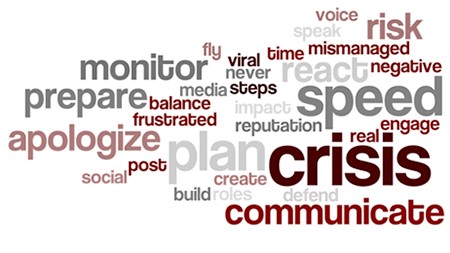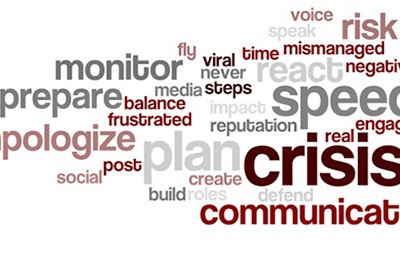Why Marketing Is Key To Mitigating Damage In Cyber Attacks
A cyberattack can shatter customer trust in minutes, leaving organizations scrambling to maintain their reputation and relationships. When sensitive data falls into the wrong hands, public relations teams step into a critical role as the bridge between the company and its stakeholders. Recent studies show that 60% of small companies go out of business within six months of a cyberattack, making effective PR response essential for survival. The way an organization communicates during this crisis can mean the difference between rebuilding customer confidence and suffering permanent brand damage. PR professionals must balance transparency with security, speed with accuracy, and empathy with action to guide their organization through the aftermath of a breach.
The initial response to a cyberattack sets the tone for all future communication. According to a 2023 IBM Security study, companies that respond within the first 24 hours of discovering a breach save an average of $1.2 million in breach costs compared to slower responders.
A cyberattack can shatter customer trust in minutes, leaving organizations...
How to Create a Crisis Communication Template
When a crisis hits your organization, every second counts. A well-structured crisis communication template acts as your roadmap through turbulent times, helping you respond quickly and effectively to protect your organization’s reputation and maintain stakeholder trust. According to a PwC Global Crisis Survey, 95% of business leaders expect their organization to face a crisis in the future, yet only 39% have a crisis response plan in place. This guide will walk you through creating a practical crisis communication template that you can adapt and implement immediately when needed. We’ll cover the essential components, team structures, messaging frameworks, and real-world examples to help you build a robust crisis response system.
The foundation of an effective crisis communication plan starts with a clear, accessible structure that team members can quickly navigate during high-pressure situations. Your template should include several key sections that guide your organization’s response from initial crisis detection through resolution.
When a crisis hits your organization, every second counts. A well-structured...
Top Crisis Management Mistakes: Common Errors & How To Avoid
Major corporate crises can devastate organizations, damage reputations, and cost billions in losses when mishandled. From BP’s Deepwater Horizon disaster to Facebook’s Cambridge Analytica scandal, history shows how poor crisis management amplifies negative impacts. Looking at real-world examples reveals common patterns in failed responses – delayed action, lack of preparation, ineffective communication, and leadership missteps. By studying these cases closely, organizations can identify critical weaknesses in their own crisis readiness and take steps to avoid similar mistakes. This analysis examines major crisis management failures, breaks down what went wrong, and provides actionable lessons for building more resilient response capabilities.
Crisis management plans often fail due to several fundamental issues that leave organizations vulnerable when emergencies strike. One of the most frequent problems is incomplete risk assessment – companies either fail to identify potential crisis scenarios or underestimate their likelihood and potential impact. BP’s Deepwater Horizon disaster provides a stark example, as the company had not adequately planned for a major oil spill despite operating in high-risk deep water conditions.
Major corporate crises can devastate organizations, damage reputations, and...
Crisis Management in Health Tech: A Leadership Guide For AI-Driven Medicine
Health technology companies face unique challenges when managing crises, from AI system failures to data breaches that affect patient care. Recent statistics show that 82% of healthcare organizations experienced some form of cyber incident in the past year, while AI-related errors in medical applications rose by 45%. The stakes remain exceptionally high – a single incident can erode years of built trust, compromise patient safety, and trigger regulatory investigations. This guide examines proven strategies for health tech leaders to detect, respond to, and prevent crises while maintaining operational stability and stakeholder confidence.
When AI systems make mistakes in drug discovery processes, quick identification and clear communication become paramount. Organizations need robust monitoring systems that can flag anomalies in real-time. According to Deloitte’s 2025 Healthcare Outlook, companies that implement continuous AI monitoring detect errors 76% faster than those using periodic reviews.
Health technology companies face unique challenges when managing crises, from...
Crisis Management in the Fitness Industry: A Strategic Guide for Gym Owners
The fitness industry faces unique challenges when crisis strikes. From sudden closures during the COVID-19 pandemic to equipment malfunctions and health emergencies, gym owners must prepare for various disruptions that can impact operations and member trust. Recent data shows that fitness centers with crisis management plans reduce incident likelihood by 60% and respond more effectively when problems arise. This guide examines proven strategies for crisis preparation, response, and recovery in the fitness sector, drawing from real-world examples and research-backed approaches.
Creating an effective crisis response starts with assembling the right team and establishing clear protocols. Your crisis management team should include representatives from management, legal, public relations, and frontline staff. Each member needs defined responsibilities and decision-making authority.
The fitness industry faces unique challenges when crisis strikes. From sudden...
Setting Up a Crisis Management Team: A Guide
Organizations face unexpected challenges that can threaten their operations, reputation, and survival. From natural disasters to cybersecurity breaches, product recalls to public relations crises, the need for a well-prepared crisis management team has never been more important. Research shows that companies with established crisis teams respond 70% faster to emergencies and reduce financial impacts by up to 50% compared to unprepared organizations. This comprehensive guide will walk you through the essential steps of building, training, and maintaining an effective crisis management team that can protect your organization when disaster strikes.
A crisis management team (CMT) serves as the central coordination point during emergencies, making critical decisions and directing response efforts across the organization. This team must be carefully structured with clear roles, responsibilities, and authority to act swiftly when time is of the essence.
Organizations face unexpected challenges that can threaten their operations,...
Crisis Management in Financial Technology: Building Resilience Against Fraud, Security Breaches, and Regulatory Challenges
Financial technology companies face mounting pressure to protect billions in digital transactions while maintaining customer trust and regulatory compliance. Recent data shows a 150% increase in fintech-targeted cyber attacks since 2021, with the average security breach now costing firms $4.2 million in direct losses and remediation. For fintech executives, the ability to detect, contain, and recover from crises has become a defining factor in market survival. This reality demands a sophisticated approach to crisis management that combines rapid response capabilities with strategic reputation protection.
The foundation of effective fintech crisis management starts with assembling the right team. Modern fintech operations require specialized roles beyond traditional crisis management structures. A Chief Crisis Officer should lead the core team, supported by fraud analysts, IT security specialists, compliance officers, and communications experts.
Financial technology companies face mounting pressure to protect billions in...
Crisis Management for Event Professionals
When disaster strikes at an event, every second counts. From natural disasters to security threats, technical failures to medical emergencies, event professionals must prepare for scenarios that can derail even the most meticulously planned gatherings. A 2023 study by EventMB revealed that 76% of event planners experienced at least one significant crisis during their events in the past year, yet only 34% had comprehensive crisis management plans in place. The stakes couldn’t be higher – attendee safety, brand reputation, and financial investments all hang in the balance during a crisis. For event professionals, mastering crisis management isn’t just about damage control – it’s about maintaining leadership when chaos threatens to take over.
The foundation of effective crisis management lies in preparation long before any incident occurs. Start by assembling a dedicated crisis team with clearly defined roles and responsibilities. This team should include representatives from operations, security, communications, and medical services. According to the Professional Convention Management Association (PCMA), events with designated crisis teams respond to incidents 60% faster than those without such structures.
When disaster strikes at an event, every second counts. From natural disasters...












